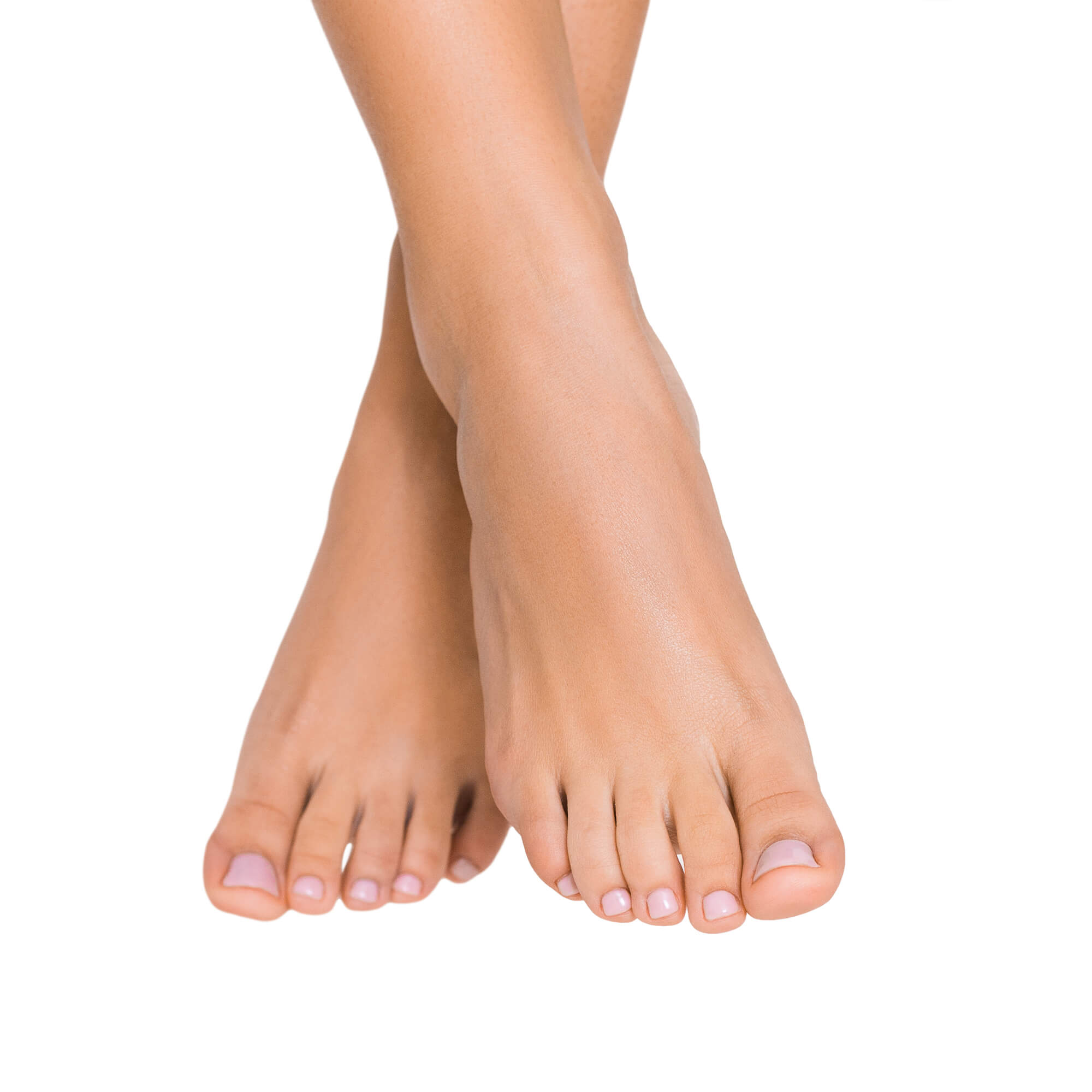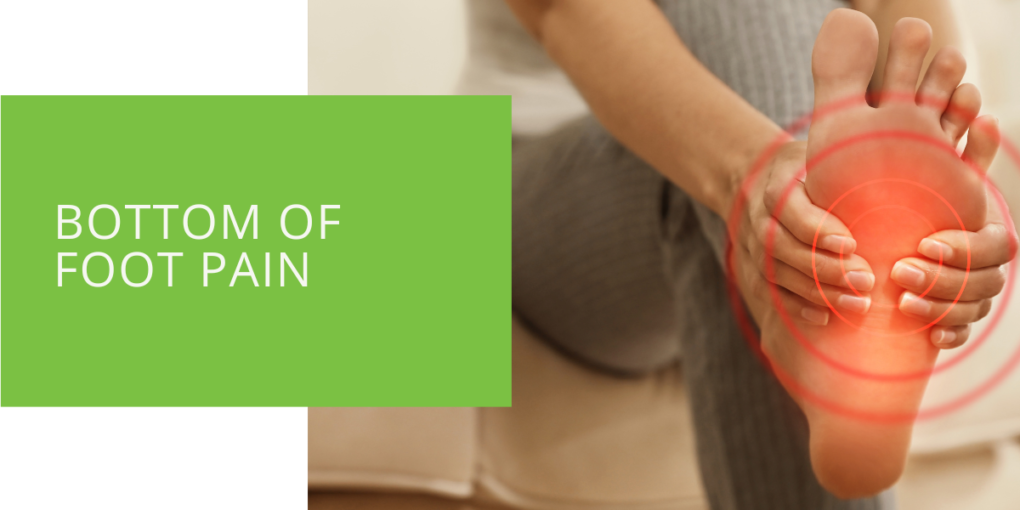Understanding and Managing Bottom of Foot Pain
Foot pain is a common problem that can affect people of all ages. It can range from mild discomfort to severe pain, making walking or standing difficult. There are many different causes of foot pain, and understanding what may be causing your pain is the first step toward finding relief.
Types of Foot Pain
There are many types of foot pain, and each type has its causes and symptoms. Here are some of the most common types of foot pain:
- Plantar Fasciitis: Plantar fasciitis is a common cause of foot pain, especially in the heel and arch. It is caused by inflammation of the plantar fascia, a band of tissue that runs along the bottom of your foot from your heel to your toes. Plantar fasciitis can cause pain when you walk, especially first thing in the morning or after sitting for a long period.
- Stress Fractures: Stress fractures are small cracks in the bones of your foot that can be caused by repetitive stress or overuse. They are most common in the metatarsal bones, the long bones in the middle of your foot. Stress fractures can cause pain, swelling, and tenderness in the foot, and they may be more painful when you walk or put pressure on the affected bone.
- Heel Spurs: Heel spurs are bony growths that can form on the heel bone. They are often caused by plantar fasciitis and can cause pain and discomfort in the heel and arch. Heel spurs can be seen on an X-ray and may be treated with rest, ice, stretching, and over-the-counter pain medication.
- Flat Feet: Flat feet, also known as fallen arches, is a condition in which the arch of the foot collapses and the sole of the foot comes into contact with the ground. Flat feet can cause pain in the heel, arch, and ball of the foot and may also cause pain in the ankles and knees.
- Overpronation: Overpronation is when the foot rolls inward too much when you walk. It can cause pain in the heel, arch, and ball of the foot and may also cause pain in the ankles and knees. Overpronation is often caused by flat feet, but it can also be caused by other factors, such as muscle imbalances or wearing shoes with poor support.

Risk Factors for Foot Pain
Several factors can increase your risk of experiencing foot pain. These include:
- Age: As we age, our feet lose some of their natural paddings, making them more prone to pain and discomfort. In addition, the ligaments and tendons in our feet can become less flexible, contributing to foot pain.
- Weight: Carrying extra weight puts extra stress on the feet, which can cause pain and discomfort. People who are overweight or obese are more likely to experience foot pain than those who are at a healthy weight.
- Foot Structure: Certain foot structures, such as flat feet or high arches, can make you more prone to foot pain. Flat feet can cause pain in the heel, arch, and ball of the foot, and high arches can cause pain in the ball of the foot and the heel.
- Shoes: Wearing shoes that do not fit properly or provide enough support can cause foot pain. Shoes that are too tight can squeeze the toes and cause pain in the ball of the foot, while shoes that are too loose can cause the foot to slide around and cause pain in the heel and arch.
- High-impact Activities: Engaging in high-impact activities, such as running or jumping, can put extra strain on the feet and cause pain. It is important to wear shoes that provide proper support and to take breaks when necessary to avoid overuse injuries.

Symptoms of Foot Pain
The symptoms of foot pain can vary depending on the cause of the pain. Some common symptoms include:
- Aching in the sole of the foot
- Tenderness and swelling in the foot
- Difficulty walking or standing on the affected foot
- Redness or warmth to the touch in the affected area

Diagnosis and Treatment of Foot Pain
If you are experiencing foot pain, it is important to see a doctor or a podiatrist (a doctor specializing in treating foot and ankle conditions) for a proper diagnosis and treatment plan. Here is what you can expect when you see a doctor for foot pain:
- Physical Examination: The first step in diagnosing foot pain is a physical examination. Your doctor will ask about your medical history and any previous foot injuries you may have had. They will also examine your feet, looking for signs of swelling, redness, and tenderness. They may also ask you to walk or stand to observe your gait and assess your range of motion.
- X-rays or Other Imaging Tests: Depending on the suspected cause of your foot pain, your doctor may recommend X-rays or other imaging tests to better look at your foot's inside. X-rays can show the bones in your foot, while other tests, such as MRI or CT scans, can provide more detailed images of the soft tissues in your foot.
- Rest, Ice, and Stretching: In many cases, foot pain can be treated with a combination of rest, ice, and stretching. Resting the affected foot can help reduce pain and inflammation, while applying ice can help reduce swelling and numb the affected area. Stretching the muscles in your foot can help improve flexibility and reduce pain.
- Medications: Over-the-counter pain medication such as acetaminophen or ibuprofen can help reduce pain and inflammation. Your doctor may also prescribe stronger medication if your pain is severe.
- Orthotic Inserts: Orthotic inserts are special inserts inside your shoes to provide extra support and cushioning. They can help reduce foot pain and improve foot function.
- Physical Therapy: Physical therapy can be an effective treatment for foot pain, especially for conditions such as plantar fasciitis and overpronation. Physical therapy can help improve flexibility and strength in the foot muscles, which can help reduce pain and improve function.
- Surgery (in Severe Cases): Surgery may be necessary to treat foot pain in rare cases. This is typically only recommended if other treatments have not successfully reduced pain and improved function. Surgical procedures to treat foot pain include tendon repair, bone fusion, and joint replacement.

Prevention of Foot Pain
There are several steps you can take to prevent foot pain:
- Wearing Proper Shoes: Wearing shoes that fit properly and provide proper support is key to preventing foot pain. Look for shoes with a low heel, good arch support, and plenty of room in the toe box. Avoid wearing shoes that are too tight or loose, and avoid going barefoot as much as possible.
- Stretching Before Physical Activity: Stretching the muscles in your feet before engaging in physical activity can help reduce your risk of foot pain. Focus on stretching the calf muscles and the muscles in the arch of your foot.
- Maintaining a Healthy Weight: Carrying extra weight puts extra strain on your feet, so maintaining a healthy weight can help prevent foot pain.
- Taking Breaks During High-Impact Activities: If you engage in high-impact activities such as running or jumping, it is important to take breaks and rest your feet. This can help prevent overuse injuries and reduce the risk of foot pain.
- Seeking Treatment for Foot Problems Early On: If you are experiencing foot pain or other foot problems, it is important to seek treatment early on. The sooner you seek treatment, the easier it may be to alleviate your symptoms and prevent further problems from occurring.
Conclusion
Foot pain is a common problem that can have various causes. From plantar fasciitis to stress fractures, understanding the cause of your foot pain is the first step towards finding relief. Seeking medical attention and taking preventive measures can help alleviate and prevent foot pain. By following the tips above, you can take control of your foot health and reduce your risk of experiencing foot pain.

